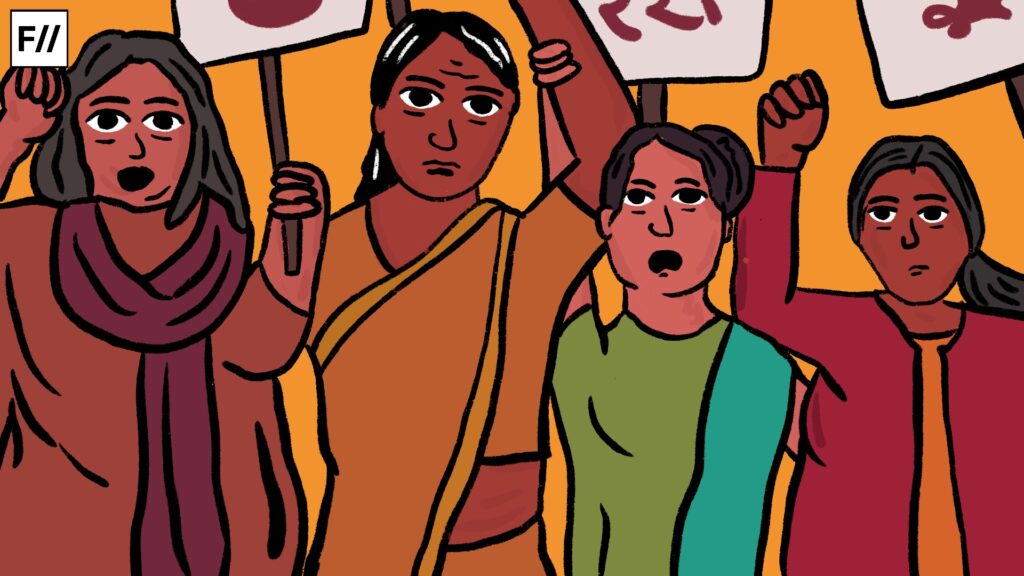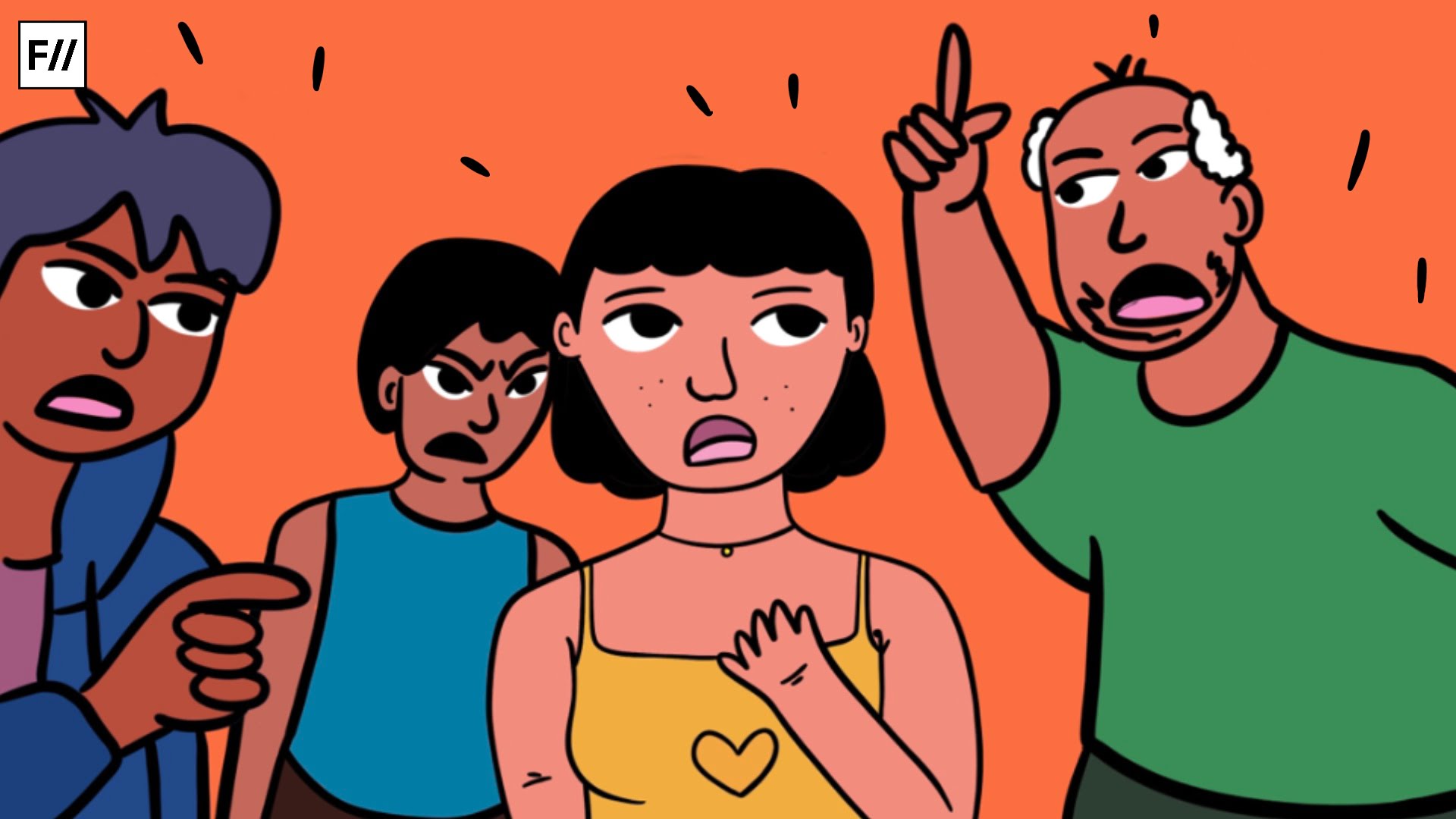Unkahi The Unspoken: A Qualitative Research On Natal Family Violence was released by Shakti Shalini (an NGO that supports survivors of gender and sexual violence). The research “Unkahi” traces the exponential increase in cases of domestic violence during the COVID-19 lockdown.
The thematic areas covered are the relationship between the pandemic and natal family violence; neglect of and discrimination against the daughter; conditioning by the ‘good girl’ syndrome; young women’s sexuality and parental control; forms of violence; same-sex relationships and natal family violence; if there is a right to choose; inter-caste/inter-religious marriages and natal family violence violence from natal family towards married women; women’s right to property and financial violence; women’s understanding of ‘domestic violence’ and their ‘rights,’; marital rape and natal family support; help-seeking challenges; and encounters with the ‘system.’
Traditionally, domestic violence has been associated with the marital home and the report is the first of its kind, locating violence that exists in the natal family through the voice of women survivors.
Decoding the report: Interrogating natal family violence in India
There is no shortage of quantitative data that deals with the rise in domestic violence during and since COVID-19. The following graph (Figure 1) from the report shows the increase in calls from survivors to Shakti Shalini’s crisis intervention and counselling helpline and among these 45% of women were living with their natal families and 10% were in live-in relationships.
Source: Shakti Shalini
For the study, semi-structured, in-depth interviews with 20 women who had approached Shakti Shalini between 2020 and 2021 and the major aspects of the report are as follows:
- identify the various forms of violence enacted by natal families towards women;
- understand the pandemic-related experiences and challenges of women who sought help from designated systems and services around domestic violence; and
- offer recommendations for the feminist-civil society collective and state actors

The thematic areas covered are the relationship between the pandemic and natal family violence; neglect of and discrimination against the daughter; conditioning by the ‘good girl’ syndrome; young women’s sexuality and parental control; forms of violence (which revealed how women can also be the perpetrators, as noted in Figure 2 below); same-sex relationships and natal family violence; if there is a right to choose; inter-caste/inter-religious marriages and natal family violence (also shedding light on love jihad laws); violence from natal family towards married women; women’s right to property and financial violence (not even one respondent had any ownership amongst their natal house property); women’s understanding of ‘domestic violence’ and their ‘rights,’; marital rape and natal family support; help-seeking challenges; and encounters with the ‘system.’
Source: Shakti Shalini
The report is groundbreaking as it focuses on rarely emphasised aspects like the conditioning of girls as ‘good girls’ who are supposed to follow the family; and the inclusion of narratives around queer people who face violence for being in a same-sex relationship; compares the differences in aiding survivors of natal family violence versus marital family violence among others, with every aspect being explored in depth through narratives from survivors in the most accessible language.
The police are known to have forced domestic violence cases to be solved within the family to save the honour or image. That is where these studies are of immense importance as they allow spaces for conversations and discussions around examining and questioning the prevalence of such violence. The media also tends to blame the victims always, which has been deftly discussed within the consultations over the Honor Crime Bill.
The following chart (Figure 3) shows the differences and concerts while working with survivors of natal family violence and marital family violence.
Lack of systemic support amidst a culture of silence, acceptance, and no resistance
The report also had a public launch which was supported by a panel discussion with Suneeta Kar Dhar (Gender and Development Expert), Vrinda Grover (Advocate at Supreme Court of India), Dr Shweta Verma (Social Worker), Meera Khanna (Founder of Everywoman Treaty on Violence Against Women and Girls), Ankita Dhar (Communications Associate at Nirantar Trust – A Centre for Gender and Education), Rukhsaar Khan (Research Participant), and Amrita Nandy (Research Consultant for the report). All of them gave valuable points which have been summarised below.
Also Read: Gender-Based Violence Is A Global Pandemic: KEM Report
The discussion shed light on how within the system and the eyes of the law as well, the family is seen as an institution that needs to be protected, which ignores the rights of women and gender minorities. The law and the state are vying to protect the institution of family, so how does one expect them to make laws that criminalise violence from the family? It is also a conundrum because as an institution, the family has a moral standing that no one wants to attack and/ or challenge.

The police are known to have forced domestic violence cases to be solved within the family to save the honour or image. That is where these studies are of immense importance as they allow spaces for conversations and discussions around examining and questioning the prevalence of such violence. The media also tends to blame the victims always, which has been deftly discussed within the consultations over the Honor Crime Bill.
The legal system does not recognise mental health, or facilitate a culture of empathy and providing support to the survivors. There have been multiple cases riddled with misogynistic court rules where survivors have been punished instead for navigating their trauma on their own in the absence of any functional institutional aid. Lastly, what we consider “normalcy” in our ideas around gender, gender roles, and sexuality is consolidated through a process of “myth-making.” It was further pointed out that these myths have been time and again broken down by feminists since the inception of the women’s movement in India.
What follows the notion of protection of the family is a culture of silence, acceptance, and no resistance. In most cases, when institutional mechanisms fail to keep women or minorities safe, it’s a sign of the requirement of a behavioural and systemic shift in the understanding of gender, law and violence. Much academic and research work has been done and is never taken into account by the policymakers unless there’s a sensational case, which also leads to larger debates around capital punishment and using optics to solve a large, systemic issue.
What one fails to understand is that this is not merely about crime and punishment, it is more about the source of the violence, the growing up embedded in ideologies that perpetuate it, and a system that constantly fails to safeguard.
Addressing mental health and how myths are constructed as “normal”
Another crucial aspect that was brought up was the intersection of mental health and violence; peculiarly focussing on how violence is a cycle (read Malvika Karlekar’s work on domestic violence as a life-cycle here) in the lives of women and gender minorities. And while the increment of domestic violence during the pandemic was dubbed as a “shadow pandemic,” in reality, natal family violence has been a lived reality for women all their lives and doesn’t lie in shadows.

The legal system does not recognise mental health, or facilitate a culture of empathy and providing support to the survivors. There have been multiple cases riddled with misogynistic court rules where survivors have been punished instead for navigating their trauma on their own in the absence of any functional institutional aid. Lastly, what we consider “normalcy” in our ideas around gender, gender roles, and sexuality is consolidated through a process of “myth-making.” It was further pointed out that these myths have been time and again broken down by feminists since the inception of the women’s movement in India.
Questioning the natal family violence is the first step
The way forward requires more concrete steps as per the findings and recommendations – more research on natal family violence, more awareness and sensitisation, campaigns for building women’s capacity, psycho-social support from a young age, community-based and public interventions in the presence of inaccessible systems and so on.
As mentioned in the report, the findings are a small number that indicates the horrors of going through natal family violence. It’s a daring task to question family itself and the research report goes even further as it not only scathingly questions the institution of family itself but also the violence it perpetuates. “Unkahi The Unspoken” is a very precise and timely critique of patriarchy and family, and one that is substantial through centring lived experiences. One should read the report and understand that gender-based violence isn’t something that only exists outside of one’s natal family.
Other steps that can be taken include restructuring sex education (which is at present absent from the curriculum in Indian schools) to include power, gender, and different kinds of relationships based on different social locations.
Also Read: Domestic Violence And The PWDVA: Its Limitations In The Current Implementation
There was much deliberation with the audience members as well where one professor from the University of Delhi enquired if there could be a mechanism for protecting students as well from natal family violence as many of them suffered through the same during the pandemic. The response that followed highlighted that it is the work of Women Development Cells but they do not have adequate funds. In the presence of underfunded institutional frameworks, such studies are a first step to initiate data collection that also involves questioning the family at “home.”

As mentioned in the report, the findings are a small number that indicates the horrors of going through natal family violence. It’s a daring task to question family itself and the research report goes even further as it not only scathingly questions the institution of family itself but also the violence it perpetuates. “Unkahi The Unspoken” is a very precise and timely critique of patriarchy and family, and one that is substantial through centring lived experiences. One should read the report and understand that gender-based violence isn’t something that only exists outside of one’s natal family.
Also Read: No Country For Women? Calling For A World Free From Violence Against Women And Girls
Without questioning family, the very source of violence and without examining it as a site of generation and perpetuation of gender-based violence, it’s impossible to prevent it or even redress it to an extent.
Note: The Research Report can be accessed here. The research report is also supported by artwork and graphics created specifically for the report by Melissa Amalir, which have been featured in the report and were also displayed as an exhibition during the public event.





Very interesting and insightful write up.